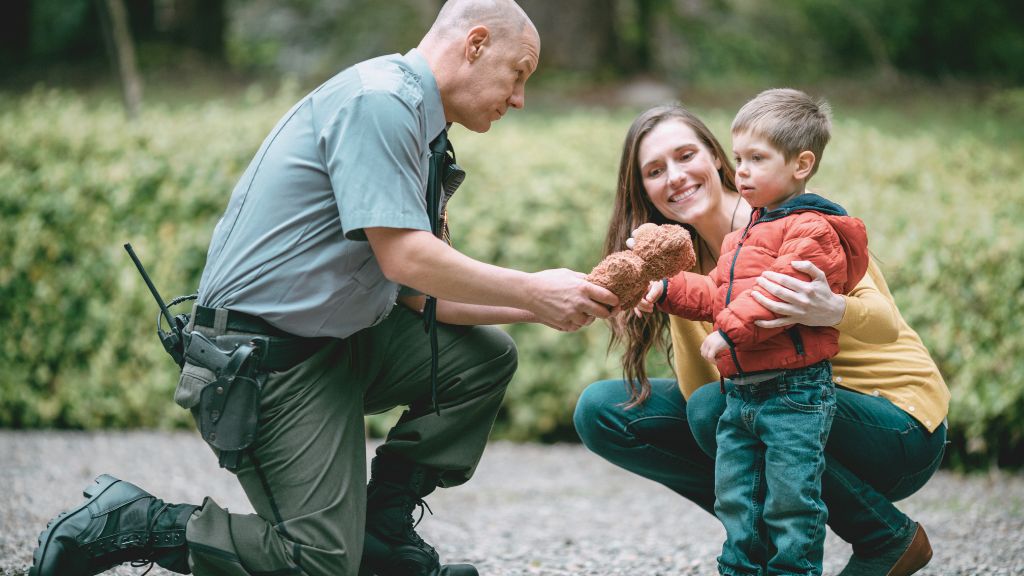Table of Contents
How Can You Improve Safety between Police and Those with Autism?
People who care for and support those with autism spectrum disorder (ASD) sometimes worry about teaching them how to interact with law enforcement appropriately. Unfortunately, there have been misunderstandings between people with autism and police in the past, which have resulted in harm. While law enforcement officers work hard to keep communities safe, and many law enforcement support the autism community in extraordinary ways, there is still room for improvement.
As our loved ones with autism grow up and become more independent, some behaviors like wandering or elopement can increase encounters between those with autism and law enforcement. These pressures can leave some parents of ASD children considering how they should best guide their kids in managing these encounters. This further highlights the need to increase awareness surrounding ASD and its traits.
Fortunately, with safety measures, training, and autism awareness for law enforcement personnel, ASD individuals, and others interacting with those on the spectrum, we can enhance outcomes for these groups and society.
Proactively promoting appropriate interactions and knowledge about law enforcement and the police is vital and can even be lifesaving. Poor encounters between those with autism and law enforcement are typically due to a variety of issues, often related to the complexities of ASD, including challenges in communication and behavior.
This blog by ABA Centers of Virginia will respectfully explore the dynamics of autism and law enforcement. Furthermore, we will present strategies aimed at fostering safer interactions between children with autism and the police. These methods function to reduce the risk of conflict and promote more positive resolutions during interactions with law enforcement, should they occur.
Fortunately, through autism acceptance and therapy modalities for ASD, like applied behavior analysis or ABA therapy, it is possible to improve the relationship between those with autism and law enforcement to prevent dangerous misunderstandings.
So, keep reading to understand this vital topic more deeply. Click here for more information about ABA Centers of Virginia, our ABA care, and autism diagnostic services.
Autism and How It Can Affect Behavior
According to Autism Speaks, autism is a developmental condition commonly affecting behavior, communication, and social interaction in individuals across the spectrum. However, ASD challenges may also include reactivity in the context of emergencies. Furthermore, everyone on the spectrum can vary in the intensity of challenges they face.
Ultimately, it’s vital to note that each person with autism has unique strengths and difficulties. Therefore, tailored support can be standard for their appropriate integration and understanding of society, including interactions with the police.
Common Public Misconceptions Surrounding Autism Traits
Individuals with ASD often display traits that may include repetitive behaviors, sensory sensitivities, and specific interests. Some need help with interpreting body language and understanding community guidelines and other commonalities.
This lack of awareness, difficulty understanding, or expression of atypical behavior can make encountering emergency services complicated. Some may perceive some ASD traits as threatening, especially coming from an adult. Furthermore, in some cases, these actions can attract attention that can jeopardize the individuals exhibiting safety, which they may not understand.
Some examples of these actions include:
- Self-stimulation
- Avoiding eye contact
- Excessively fidgeting
- Difficulty with communication and social cues
- Heightened sensitivity to touch, sound, or light
- Aggressive gesturing, i.e., reaching, grasping, or pulling for access to a need or desire
For instance, if a nonverbal man with ASD is experiencing extreme sensory pain due to sunlight in his eyes without suitable intervention, he may be unable to express what he feels adequately. These internal experiences can lead him to exhibit behavior that can be dangerous, like slapping or swatting. Furthermore, it can warrant unwanted negative attention from authorities, who may see his gestures as threats instead of behavior in response to the symptoms of pain.
This example demonstrates how misunderstandings can escalate into dangerous situations.
Interaction Challenges between Autism and the Police
According to the International Board for Credentialing and Continuing Education Standards (IBCCES), individuals with autism face a higher risk of getting involved in misunderstandings with law enforcement that may lead to incarceration compared to neurotypical individuals.
Fortunately, many police departments have begun efforts to enhance their understanding of autism traits and interact with individuals in a more inclusive, respectful, and empathetic way. However, those lacking autism awareness training may subject individuals with ASD to confusing, distressing situations unintentionally.
Strategies for Safe Interactions between Children with Autism and Law Enforcement
To encourage safer interactions, parents and autism advocates should take action to educate their loved ones with ASD about law enforcement and how to ensure their safety during police encounters.
1. Explain the Role of Police Officers and Other Law Enforcement:
It is essential to educate your child about the role of police officers in keeping the community safe. Understanding the purpose of law enforcement can also help ASD children and teens ensure they have suitable expectations in emergencies.
2. Create a Safety Plan:
This plan should include reciting personal information, emergency contacts, and a list of triggers or behaviors that police officers may misunderstand.
3. Teach Your Loved One How to Identify Law Enforcement:
Showing your child pictures or videos of different types of police officers can help them recognize who they are in case of any emergency.
Also, when appropriate, introduce your child to friendly officers who are willing to engage with them to demonstrate that reaching out to authority doesn’t have to be scary. This small exposure can also help reduce anxiety during future encounters with police.
4. Visit Local Police Departments:
Contact your local police department and ask if they offer tours or community events. These visits can give your child the opportunity to meet police officers and become more familiar with them.
5. Practice through Role-Playing:
Practicing different scenarios with your loved one to help them understand how to behave during a police encounter. During practice, try to discuss speaking clearly and staying calm.
6. Promote Appropriate Behavior:
By teaching your ASD loved one appropriate behavior in public settings, you can help prevent misunderstandings from happening proactively. ABA therapy is the gold standard in this care.
7. Know Your Rights:
As a parent or caregiver of someone with autism, it is essential to know your rights and the rights of your loved one when interacting with law enforcement.
ABA Therapy Enhances Communication between those with Autism and the Police
ABA therapy is essential support for many individuals with autism and their families. This behavioral model focuses on improving social, communication, and behavioral skills through positive reinforcement techniques. This approach makes ASD learning engaging, fun, and playful.
Board Certified Behavior Analysts (BCBAs) help individuals with autism learn how to navigate challenging situations, including interactions with law enforcement and other officials, to reduce the likelihood of misjudgments or escalations.
ABA skills that help foster this include but are limited to:
- Recognizing a crisis
- Enhancing problem-solving skills
- Learning to call 911 or access emergency help
- Identifying authority
- Exploring communication strategies
- Developing coping mechanisms for anxiety, frustration, and sensory overwhelm
These skills are crucial for families with ASD children, providing a direct and caring approach that understands their direct needs.
Fostering Safety for Individuals with Autism and Law Enforcement
The relationship between autism and law enforcement is an involved issue that requires ongoing effort and collaboration from both individuals with autism and the police force. By implementing these strategies, we all can work towards fostering safer interactions for individuals on the spectrum and creating a more inclusive society even when emergencies occur.
Ultimately, it is crucial to continue advocating for awareness and acceptance of autism within our global communities and promote the value of tailored training for law enforcement officers serving these populations.
So, let’s continue to educate ourselves and others on this crucial topic to ensure the safety and well-being of all individuals.
Supporting Autism Safety With ABA Centers of Virginia
ABA Centers of Virginia offers neurodiverse families in regions like Alexandria and Fairfax top-tier ABA therapy and autism diagnostic services. Through our compassionate ABA programming, we help to promote safer interactions between individuals with autism and law enforcement through greater understanding and better options for symptom management in ASD.
Our team of ABA providers works closely with families to develop individualized plans tailored to each child’s or teen’s unique needs. For more information about us, don’t hesitate to get in touch with ABA Centers of Virginia via this link or call (855) 957-1892.
Enrolling a loved one with autism in an effective ABA therapy program like that offered at ABA Centers of Virginia gives caregivers peace of mind, knowing they are receiving specialized support from professionals who understand the needs of this evolving population.
Let’s all work together towards establishing a more inclusive and accepting society for individuals with autism, especially during encounters that can be intense but lifesaving.







